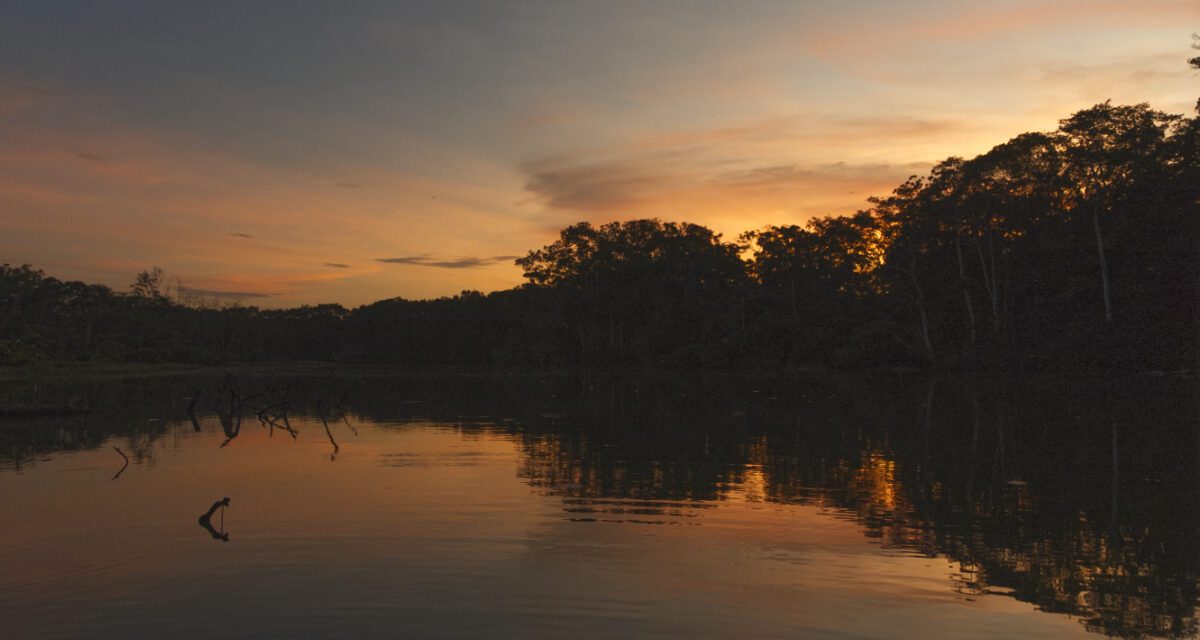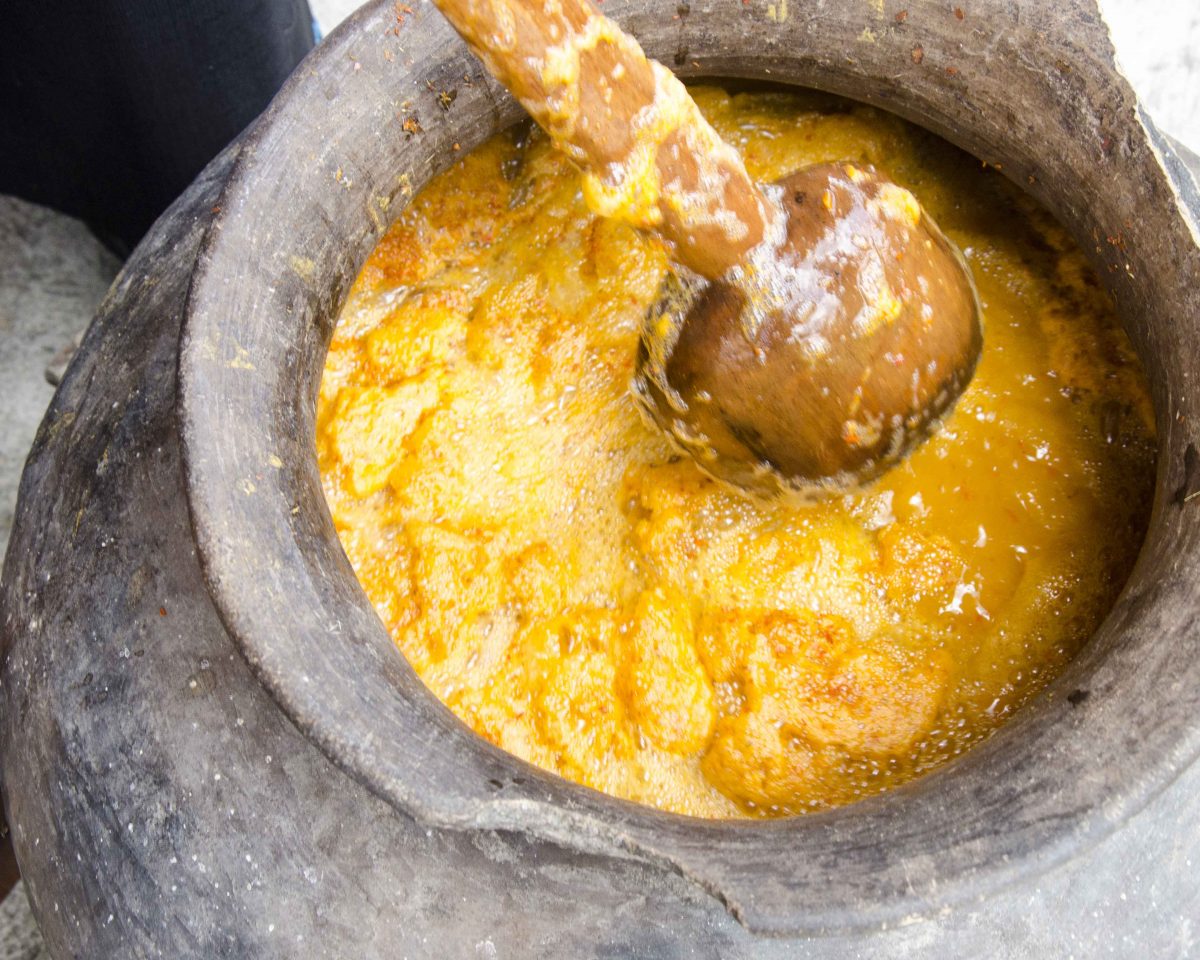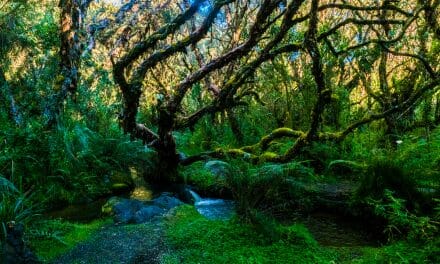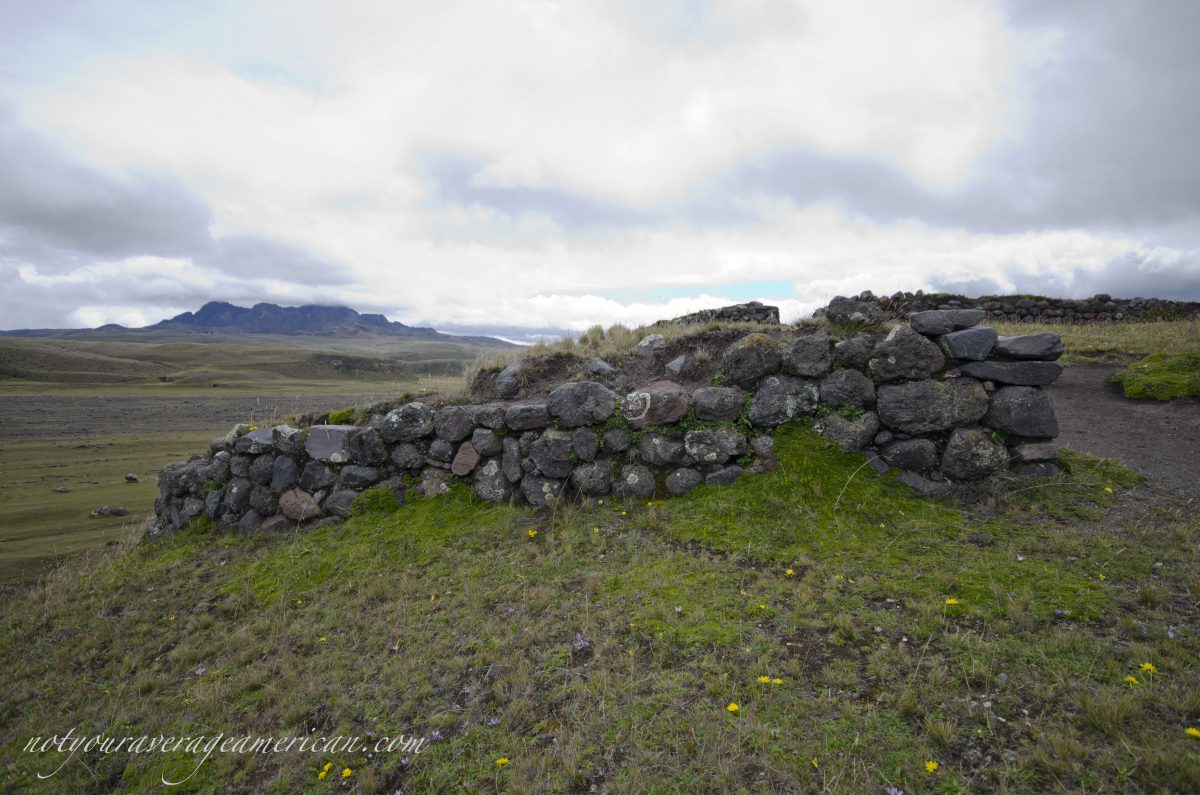As responsible travelers evolve, so do the stories we share.
This article is part of our living archive — trusted content we continue to care for.
First published on August 19, 2024 • Last updated on January 7, 2025.
When our friend and photographer, Humberto Castillo found out we were headed to the Yasuni National Park, he suggested that we add on a two night trip to the Limoncocha Biological Reserve. Are we ever glad he did! He and his partner, Steffi, introduced us to excellent local guides, great birding, and a tasty craft brew inspired by the Amazon. Read on to learn more about planning your own trip to Limoncocha.
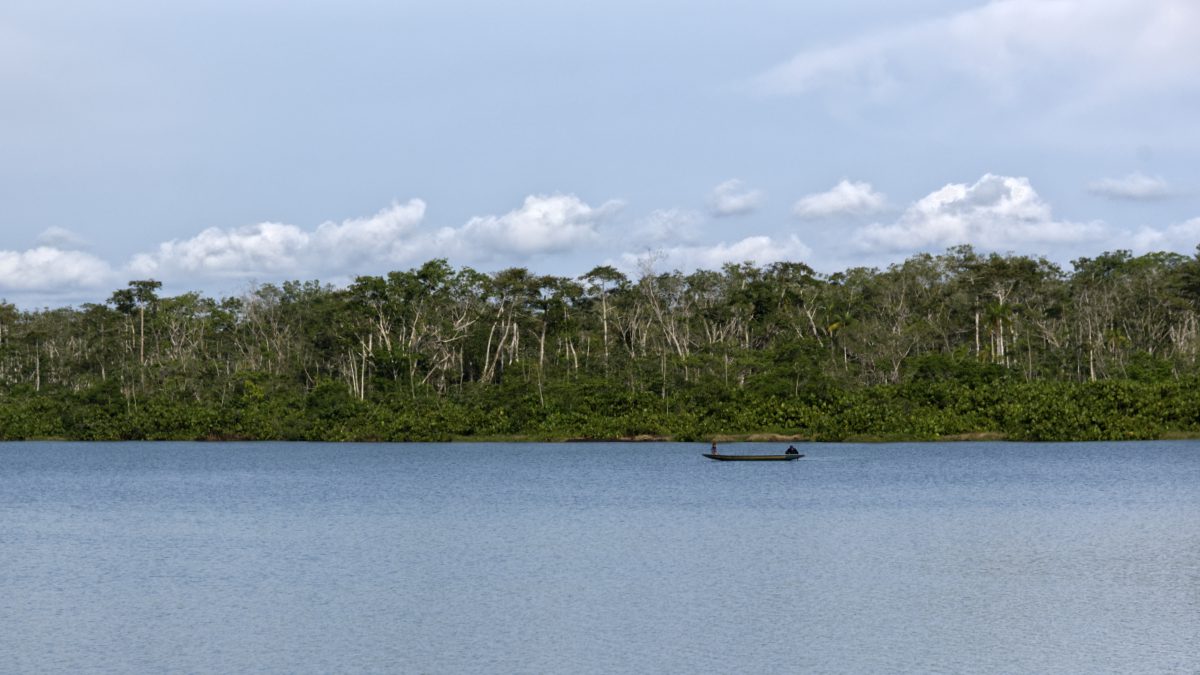
What is the Limoncocha Biological Reserve?
At 11,000 acres, the Limoncocha Biological Reserve is one of the smallest nationally protected areas in Ecuador’s Amazon. Despite its size, its biodiversity is incredible and includes 80 species of fish and 500+ species of birds. No wonder birders flock to this destination!
In 1998, Limoncocha was declared a wetland of international importance by the Ramsar Convention. At the time, the area report noted that “the nearest city is Puerto Francisco de Orellana (aka Coca), one hour by outboard up the Napo River from the reserve.” Back in the day, no roads connected the lake to the highway. Limoncocha was literally a backwater.
That same report called out two important species, the Hoatzin (Ophistocomus hoazin) and the Black Caiman (Melanosuchus niger). Today, tourists can easily see both. In fact, the Hoatzin is so prevalent they have become a local joke among guides. Ironically, I do not have a great photo of either from this trip!
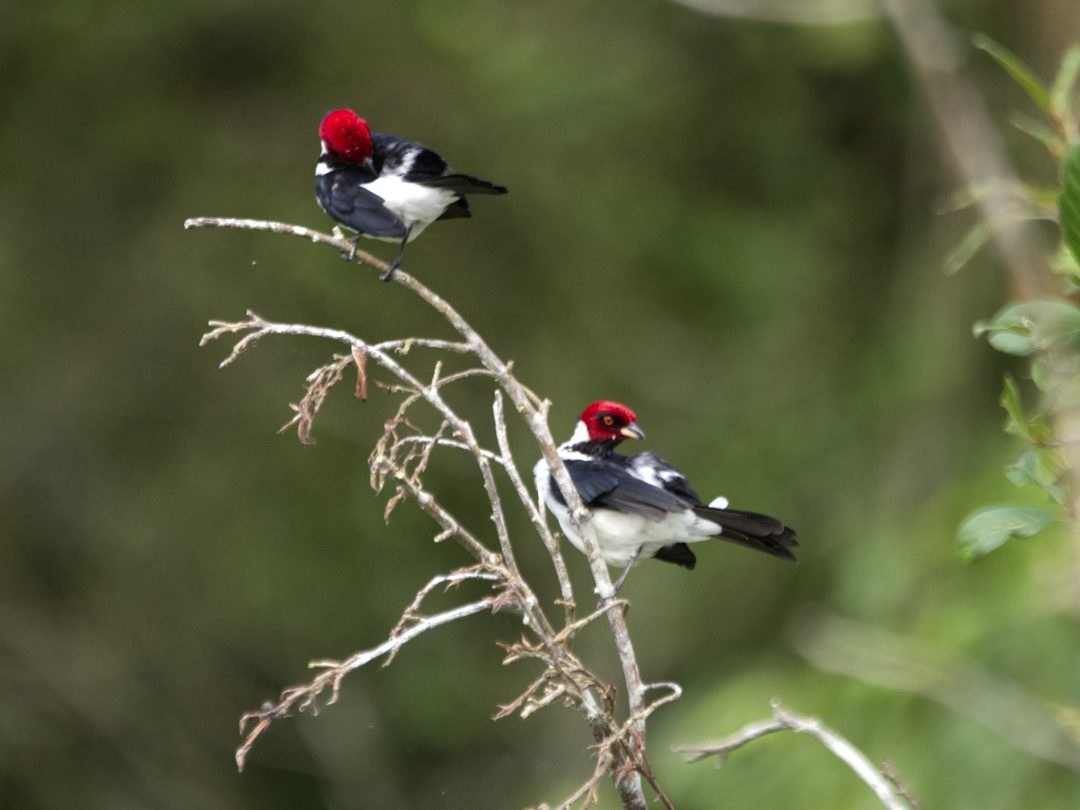
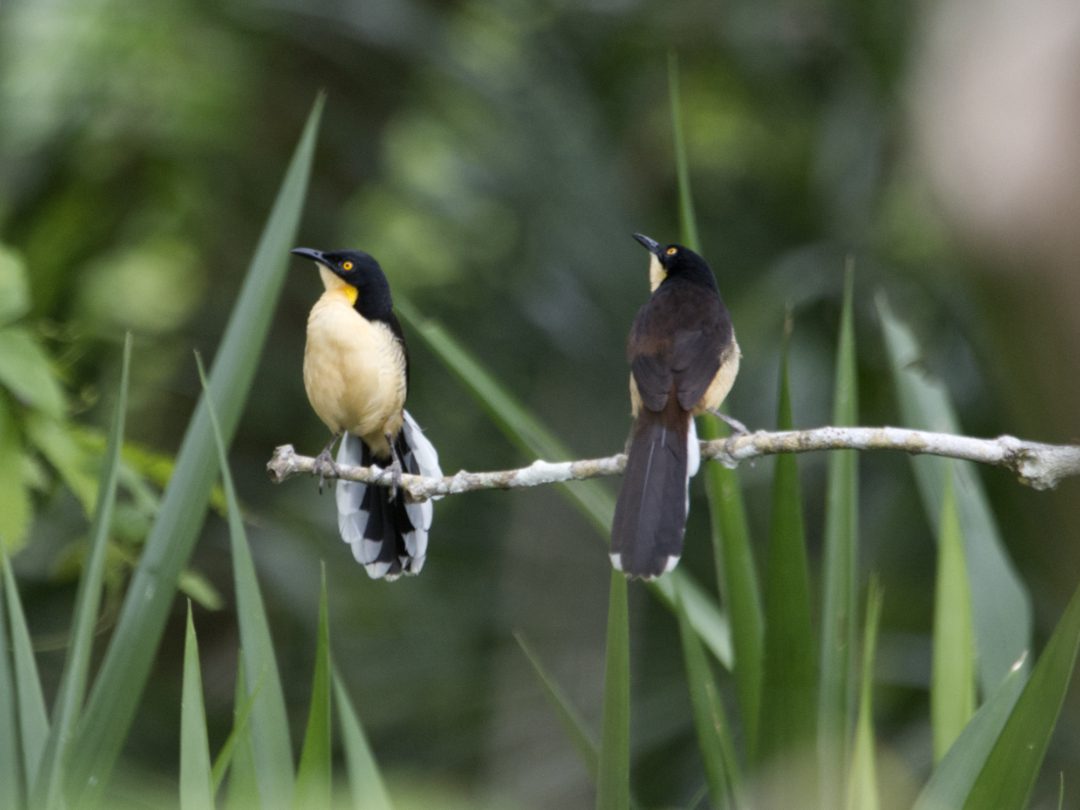
What to Do at Limonocha?
Of course, everyone who reads our blog knows that we love to write about places where you can birdwatch. But Limonocha offers birdwatching of different kinds as well as other activities. Here are a few of the things you might like to do.
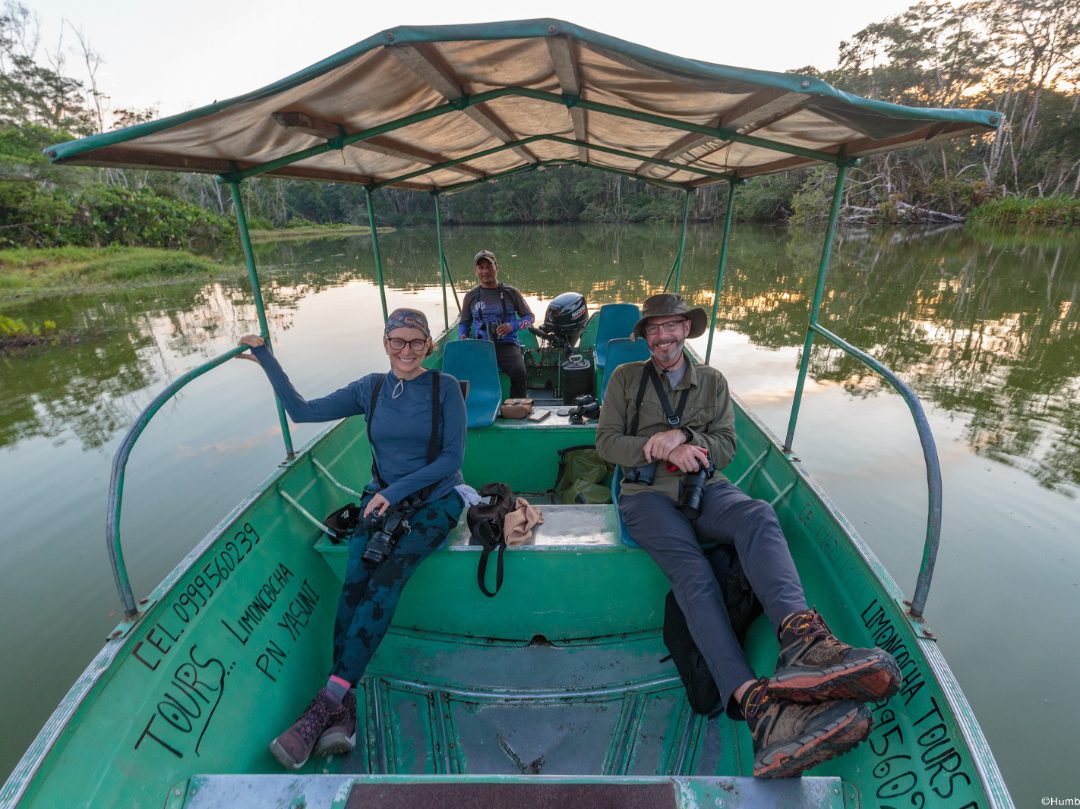
Birding from the Water
We highly recommend birdwatching on the Laguna Limoncocha early morning and late afternoon. We ended up spotting 63 species on our morning route, adding a few more later in the day. Thanks to Humberto, we always considered the position of the sun for the best photos.
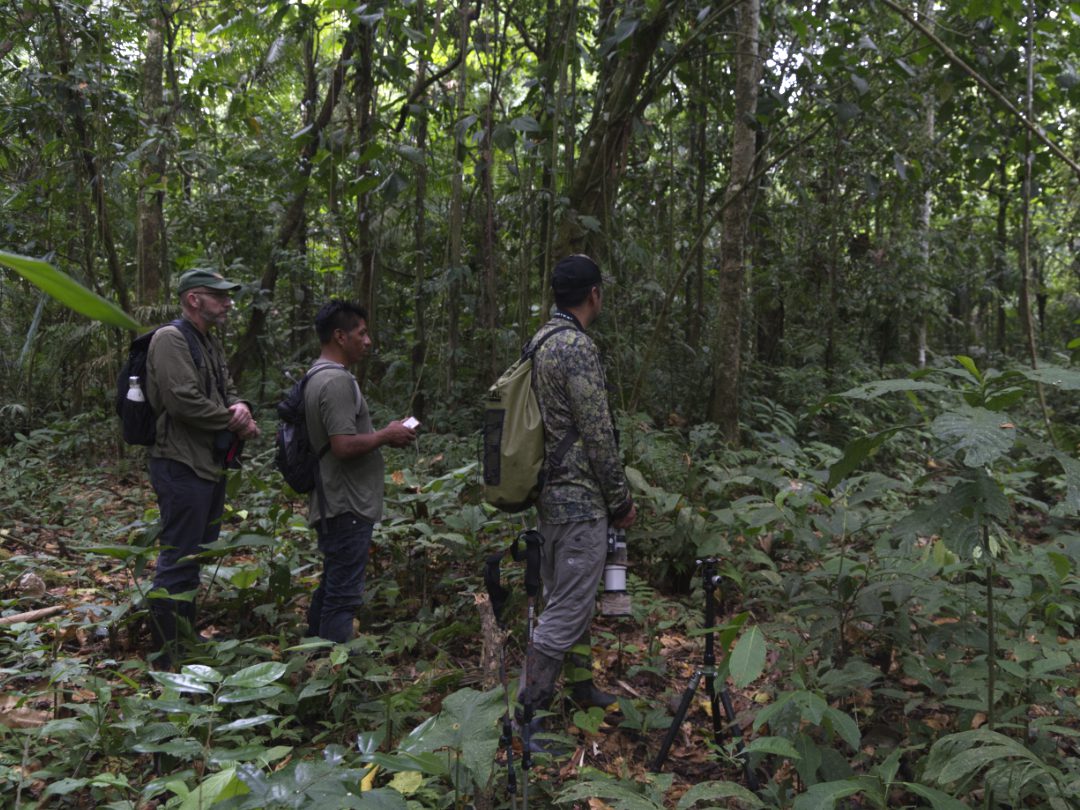
Birding on Land
Another early morning activity is birding in the local forests. With local guide, Pablo Hualingua, we saw the beautiful and shy White-Lored Antpitta. We also spotted other birds on different trails like Black Trogon, Gray-capped Flycatcher, Spot-winged Antbird, and Rufous-bellied Euphonia.
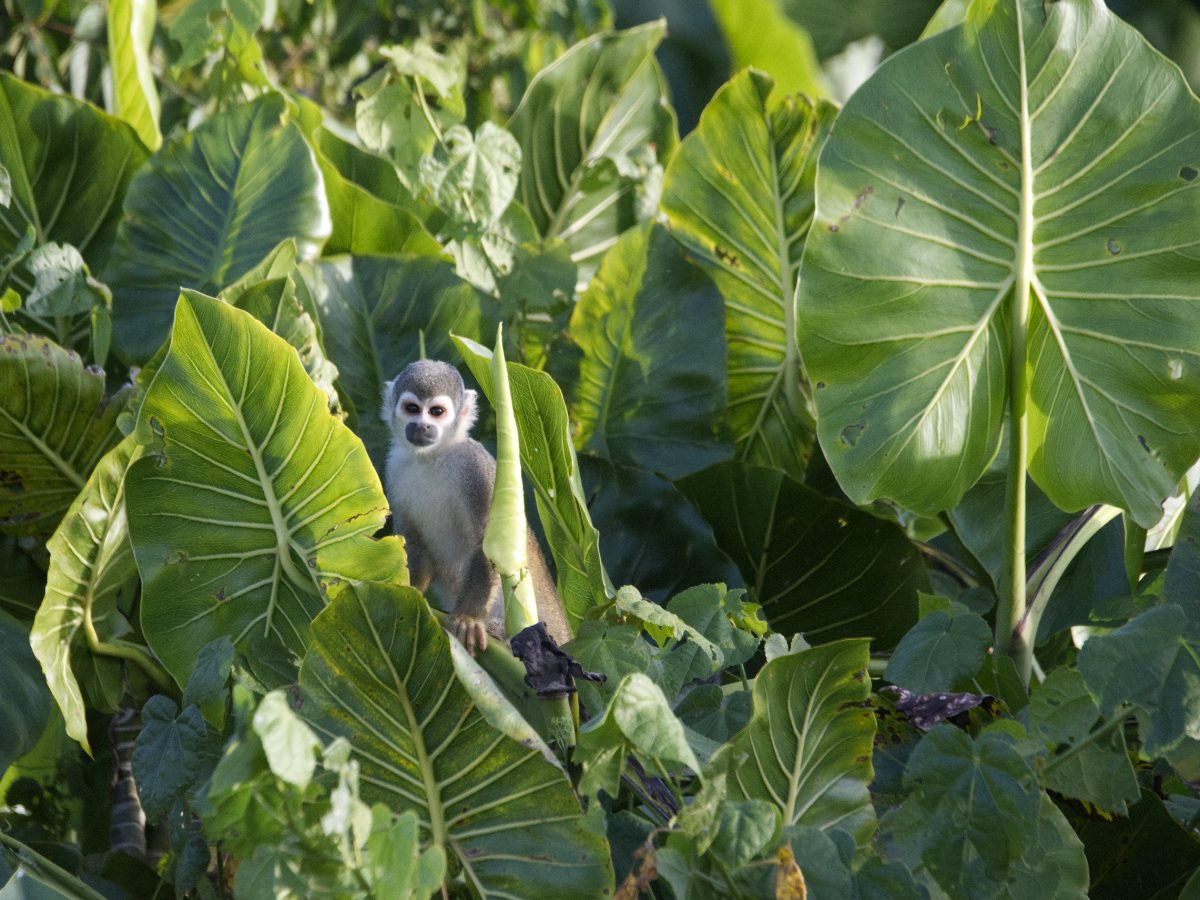
Observing Other Wildlife
While our focus was on birds, this area is rich in wildlife. We spotted Squirrel Monkeys on the shore, heard Howler monkeys in the distance, and saw caiman at night. Let your guide know in advance what your interests are and you will not be disappointed.
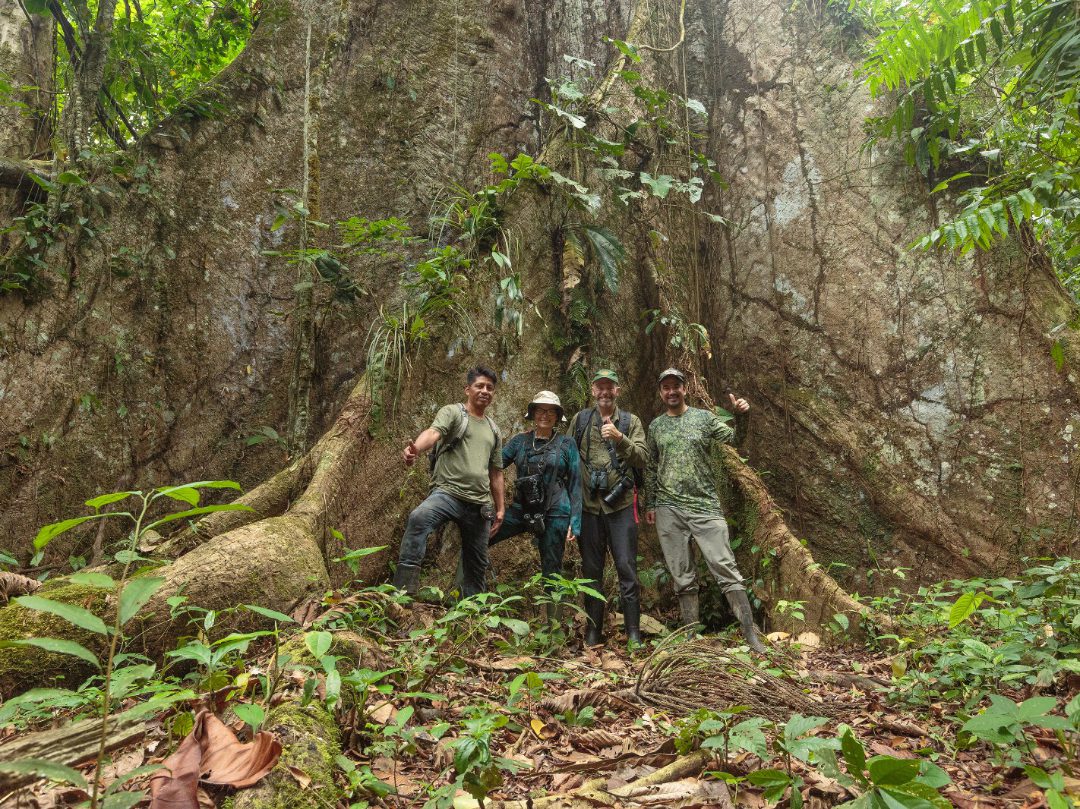
Hiking the Forest
There are a couple of different trails to hike. My favorite moment was standing beside an unbelievably huge Ceibo tree. We also admired stunning butterflies, watched Scarlet Macaws fly overhead, learned about medicinal plants, flushed a pair of Crested Owls, and so much more.
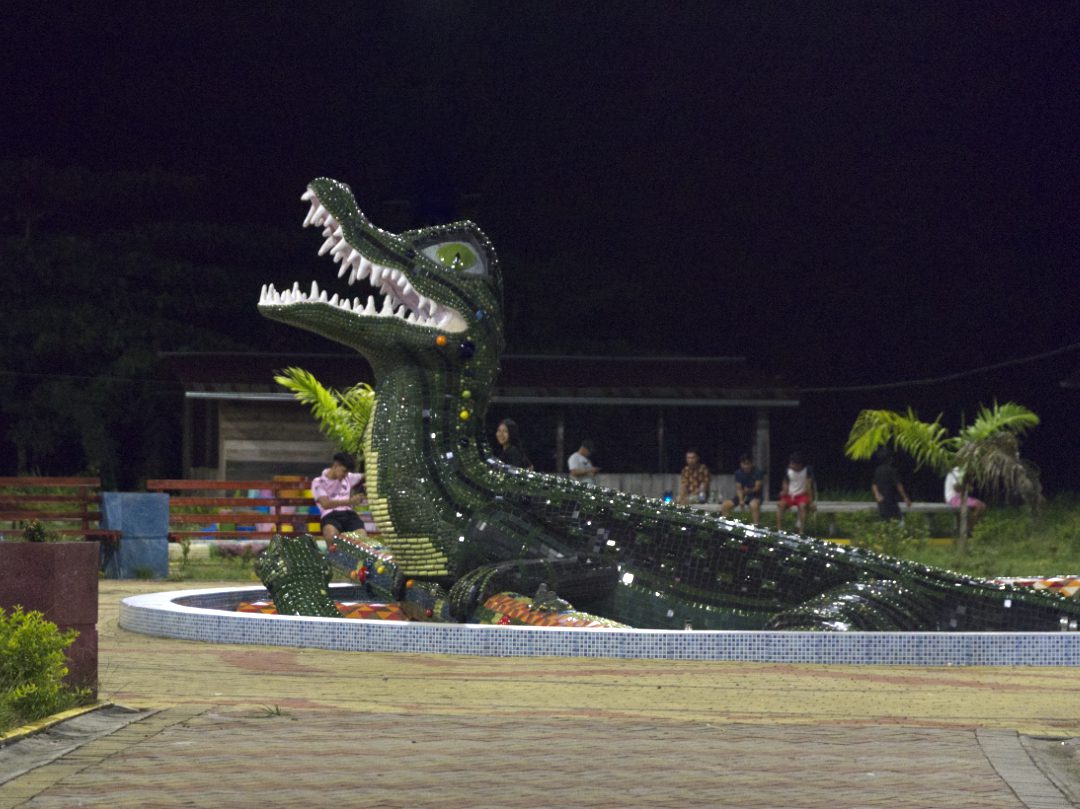
Walk the Plaza
While Limoncocha is more village than town, it does have a central plaza with a huge statues of a caiman and a trio of Harpy Eagles. A food stand offers cold drinks, ice cream, sandwiches, and french fries. We recommend splurging on a craft brew, Warmi Beer, made by our friends Humberto and Steffi.
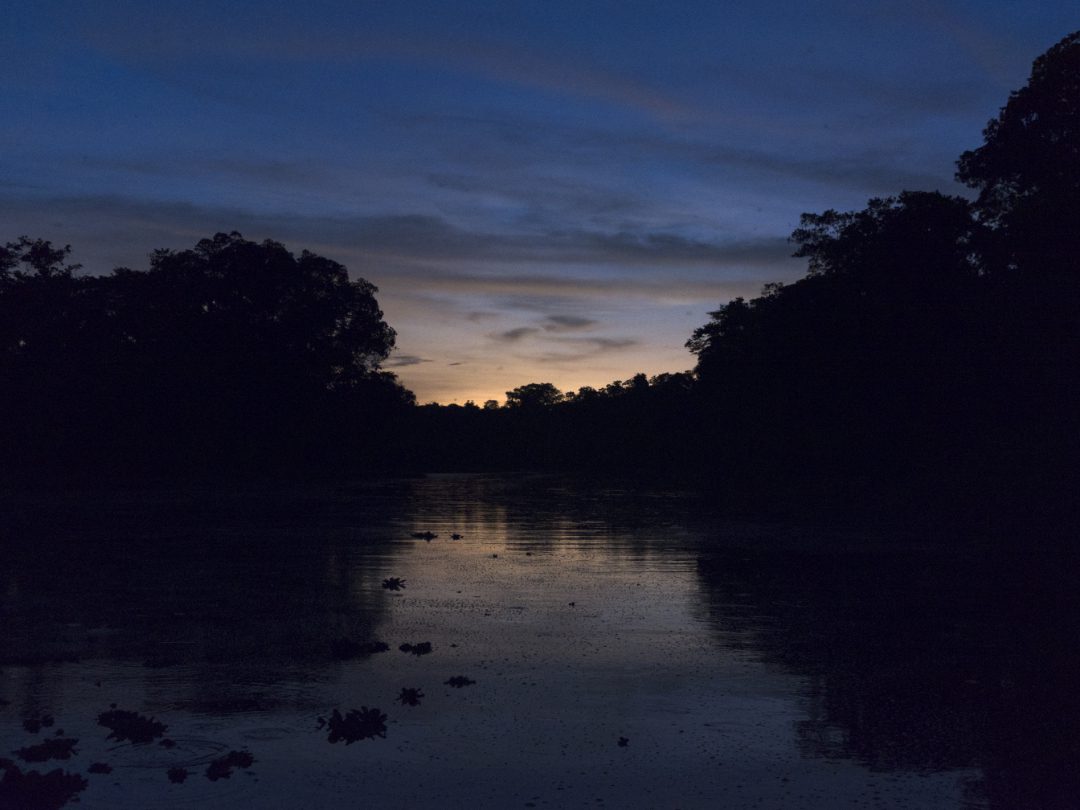
Evening on the Lake
No trip to Limoncocha is complete without an evening on the lake. First, the sunset is impressive! Second, the best time to see caiman is after dark. Third… I don’t want to say more because it will spoil the surprise. Just tell your guide we suggested adding an evening tour from the water and they will know why.
Best Season For Birdwatching?
Since we’ve only visited Limoncocha a single time, I thought it best to ask the locals about the weather, including the best time of year to see birds. Who better to ask than our motor boat operator and local guide, Carlos “Polo” Landázuri of Limoncocha Tours Expedition? After all, he has to take people out in all seasons and knows best.
Carlos’ recommendation is to visit between September and February. This is high season for migratory species. Furthermore, from December until February so it is easier to spot birds attracted to fruiting trees. Think macaws, toucans, and parrots.
I am particular to late October and November, probably because on our own trip, we saw chicks. A little earlier and we might have disturbed birds on the nest. There is nothing so cute as seeing a small, fluffy ball of feathers with huge enlongated, unwebbed toes like those of a baby waterbird.
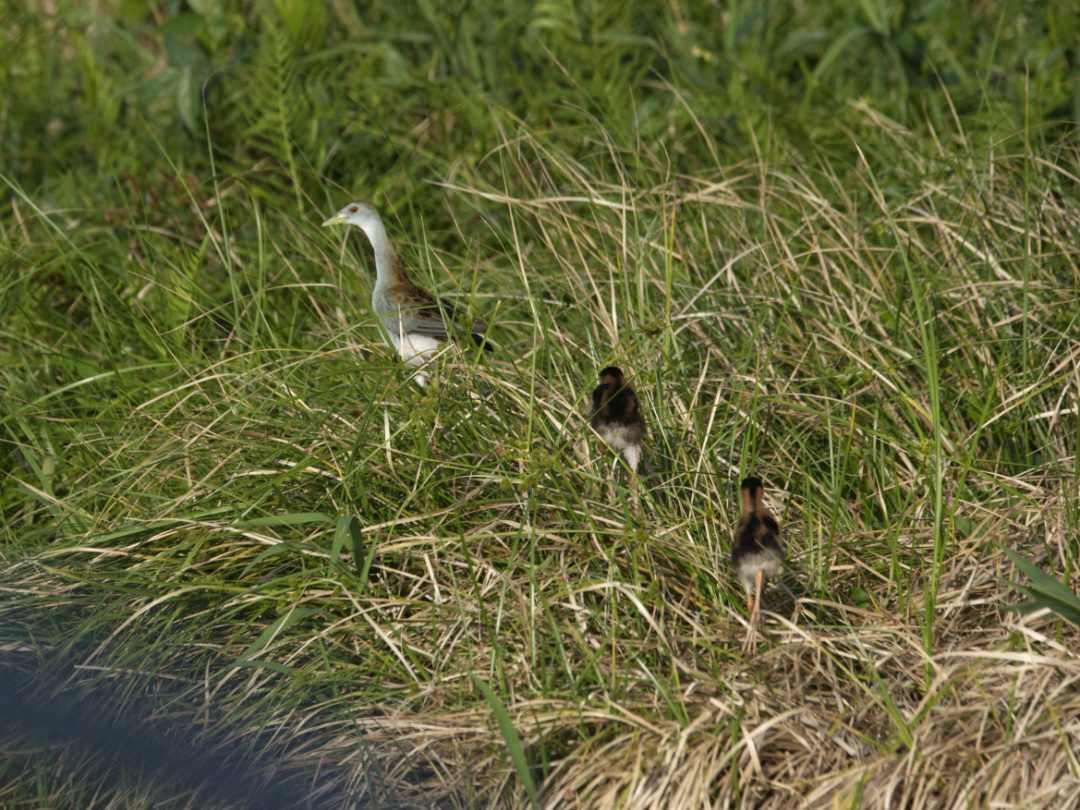
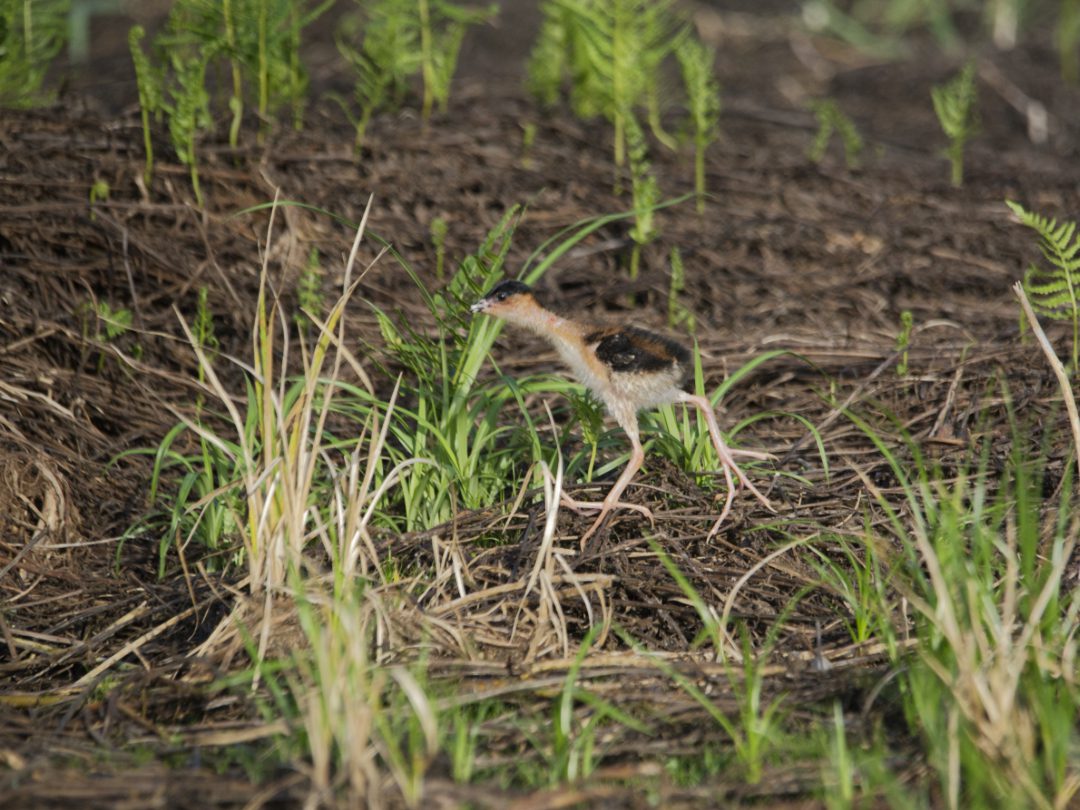
Another reason I liked November is that we had good luck seeing Kingfishers. This is likely a year round phenomenon but when you get your first good look at a Pygmy Kingfisher (and a decent photo), its an unforgetable moment.
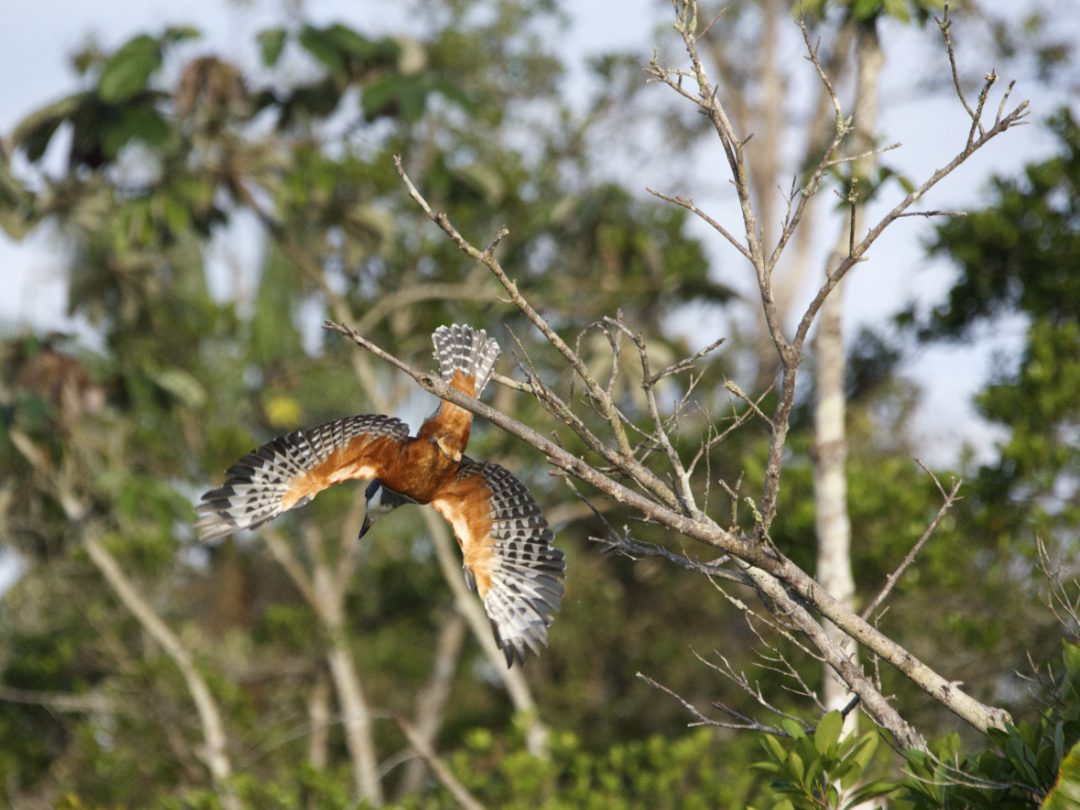
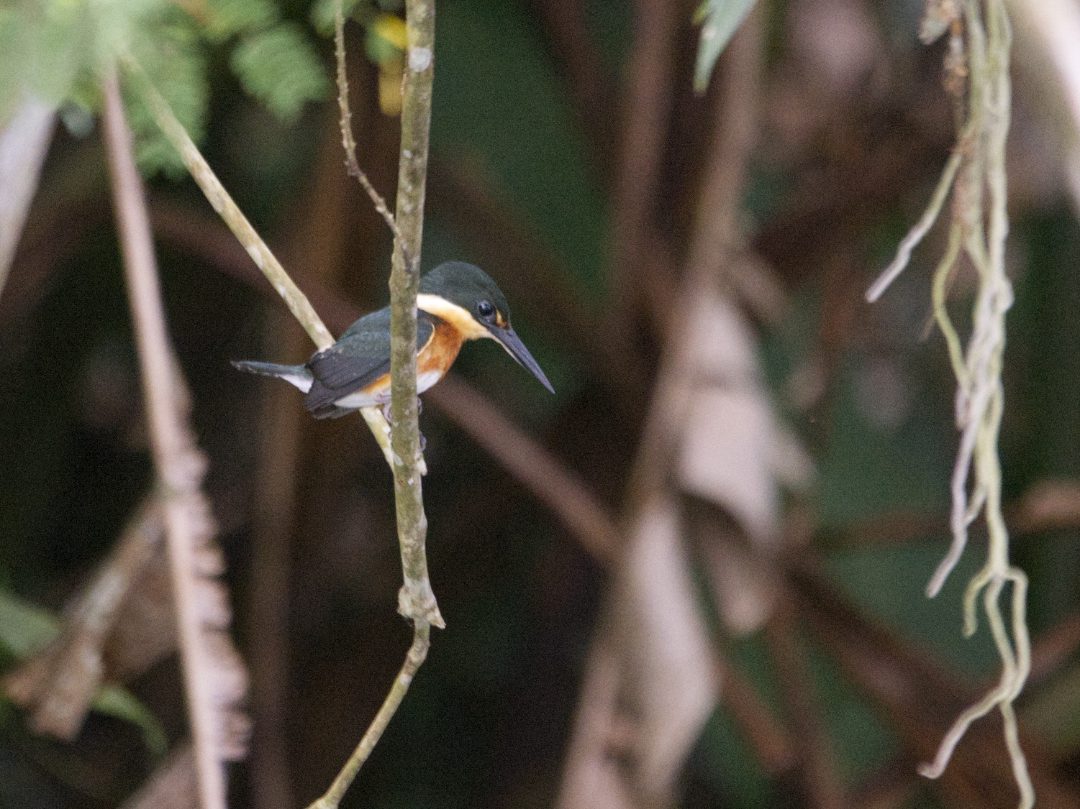
No matter when you visit, the weather will be warm (75°F to 82°F) and humid with the warmest months from September to November. Rainfall is heaviest from March to May and the driest season, July and August, is not really dry. Always expect some rain and plan for mosquitos.
Where to Stay at Limoncocha?
We highly recommend staying two nights at Limoncocha. This maximizes your opportunities of early morning birdwatching – once on the water and once on land. Then your third morning can either be a slow start or a repeat of one of those two activities if they didn’t go well the first time. You need at least one night if you want to spend the evening on the water.
Overnight options are limited and basic. If you require hot showers or air conditioning, stay in Coca.

Cabañas Antpitta
Pablo Hualinga hosted us in the small but welcoming Cabañas Antpitta. Each small cabin comes with two beds, mosquito netting, a fan, and a small bathroom. The small dining room is covered but open air, providing a pleasant place for meals. Cabañas Antpitta is also walking distance to the pier and the small plaza.
Humberto and Steffi brought all of our food though we believe that Pablo hires someone to cook when guests book directly. If you decide to bring your own, be warned that the kitchen has no refrigeration and only the most basic of supplies. Steffi did a wonderful job providing us with delicious meals made with local ingredients and we are very grateful to her for volunteering to do that!
At this moment in time, we do not have any other lodging to recommend. If you stay somewhere that you like, please let us know!
How To Get To Limoncocha?
Only a few years ago, the road to Limoncocha was practically nonexistent. Visitors came via the Napo River, usually while touring the Yasuni National Park. Nowadays, a well-paved road leads to the small town of Limoncocha, making it more common to find tours that start in Coca (aka Francisco de Orellana), a town more famous for oil than nature tourism.
Travel by Car
For the self-guided tourist in a rental car, this trip is daunting, requiring about 12-13 hours. The road from Quito to Coca (or maybe Loreto) is long and not in the best shape. The route going past Sumaco and Loreto on the E20 is recommended rather than going north through San Rafael and past the Coca-Coda Sinclair Dam due to highway erosion.
We chose to break up the trip with overnights at Cabañas San Isidro, Rio Quijos EcoLodge, or Wildsumaco. Travelers on a budget may want to check the campgrounds or simple cabins at Amarun Pakcha in Wawa Sumaco.
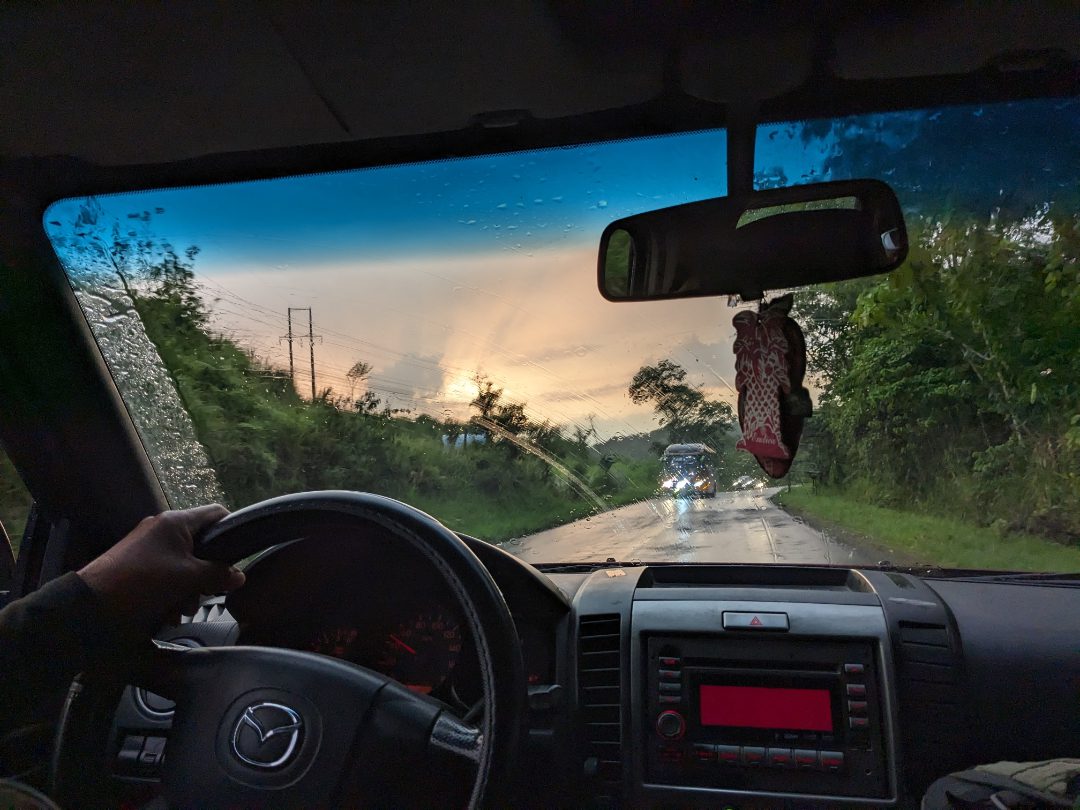
Alternatives to Travel By Car
Of course, other options include hiring a driver or a guide-driver or taking a bus or van. While several companies offer overnight service from Quito to Coca, we do not recommend traveling at night along these roads. If you choose to go by bus, please travel by day and enjoy the scenery!
Finally, you can cut this trip down to size by flying to either Coca or to Lago Agrio. Most flights arrive mid-morning to late afternoon.
No matter how you get to Coca (or maybe Loreto), now you need to get to Limoncocha. Hiring a local taxi is the easiest and fastest.
Let us know if you want us to plan a personalized itinerary for you and your friends!

